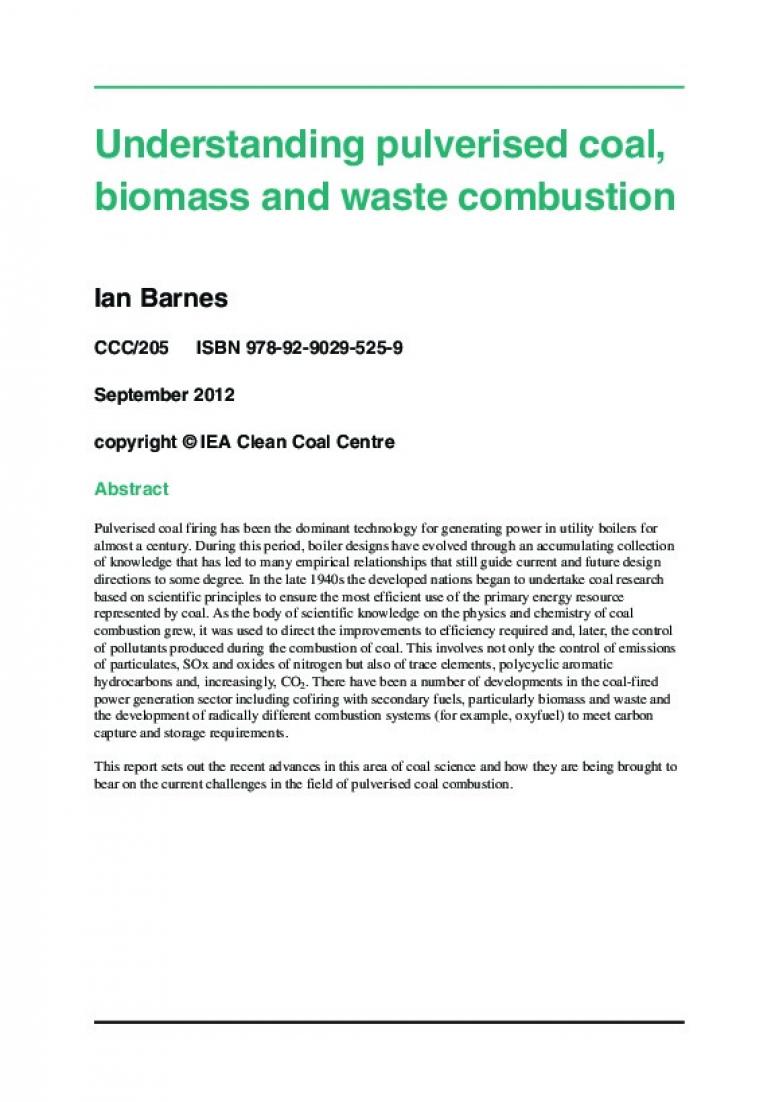CCC/205 ISBN 978-92-9029-525-9
September 2012
copyright © IEA Clean Coal Centre
Abstract
Pulverised coal firing has been the dominant technology for generating power in utility boilers for
almost a century. During this period, boiler designs have evolved through an accumulating collection
of knowledge that has led to many empirical relationships that still guide current and future design
directions to some degree. In the late 1940s the developed nations began to undertake coal research
based on scientific principles to ensure the most efficient use of the primary energy resource
represented by coal. As the body of scientific knowledge on the physics and chemistry of coal
combustion grew, it was used to direct the improvements to efficiency required and, later, the control
of pollutants produced during the combustion of coal. This involves not only the control of emissions
of particulates, SOx and oxides of nitrogen but also of trace elements, polycyclic aromatic
hydrocarbons and, increasingly, CO2. There have been a number of developments in the coal-fired
power generation sector including cofiring with secondary fuels, particularly biomass and waste and
the development of radically different combustion systems (for example, oxyfuel) to meet carbon
capture and storage requirements.
This report sets out the recent advances in this area of coal science and how they are being brought to
bear on the current challenges in the field of pulverised coal combustion.
| Attachment | Size |
|---|---|
| 1.97 MB |


